|
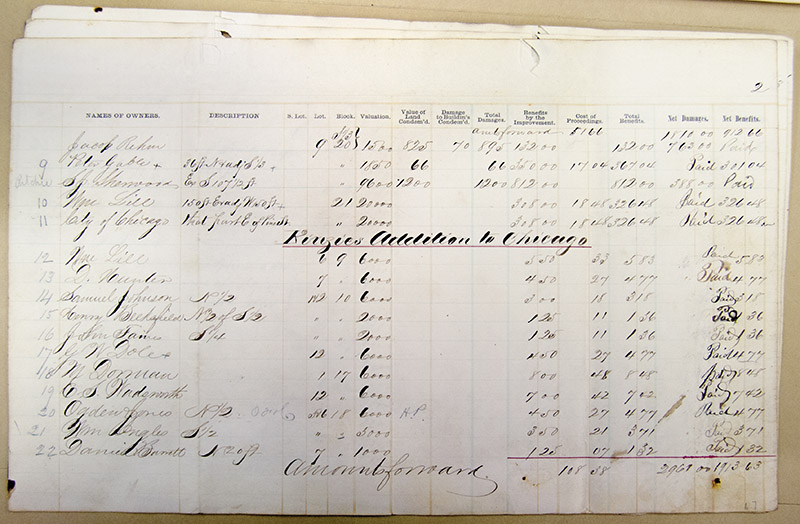 All documents on this page courtesy of the Illinois Regional Archives Depository (IRAD) at Northeastern Illinois University. |
||
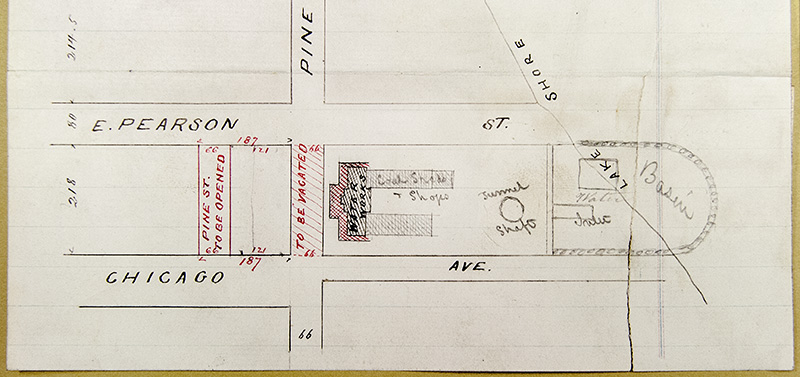 |
In this mid-1860s hand-drawn map related to the William Lill land acquisition, Pine Street is "to be vacated" and moved westward to accomodate the installation of the new pumping station's standpipe. This standpipe, engineered to regulate water pressure, would be housed within architect W.W. Boyington's castellated structure that still stands on that site today. Pine Street became known as Lincoln Park Boulevard when the street connected with Lake Shore Drive in the early 1890s, and then became part of Michigan Avenue, which always had that name south of the Chicago River. The streets were joined physically and in name with the opening of the Michigan Avenue bridge in 1920. In 1926, after years of clogged automobile traffic, the water tower and pumping station were separated by Michigan Avenue. The drawing shows the earlier water works with the tunnel shaft for the work in progress to the two-mile crib. The basin jutted out into the lake and brought in water via an inlet at its southeast wall. The lake shore line shows it ending at today's St. Clair Street. |
||
| Lill & Diversey's brewery was damaged by fire in 1860 and 1864 before its final demise in the Great Fire of 1871. The newspaper article about the 1860 fire describes the brewery's buildings as occupying the entire area east of Pine Street from Superior Street north to the Chicago water works on Chicago Avenue. | |||
Chicago Daily Tribune, October 27, 1860 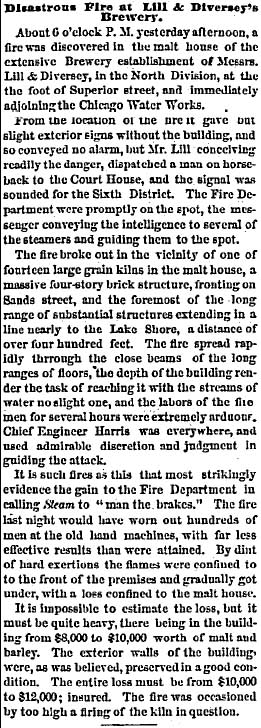 |
Chicago Daily Tribune, July 17, 1864  |
The headline and excerpted article below, published two months after the Chicago Fire, show the demise of the lakefront breweries and paraphrase William Lill during a raucous property owner meeting. Chicago Daily Tribune, December 18, 1871  Chicago Daily Tribune, March 22, 1872 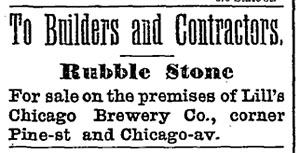 |
|
| April 4, 1866 An ordinance authorizing the Comptroller to issue a certificate of indebtedness for balance of payment for a lot for the Water Works. Be it ordained by the Common Council of the City of Chicago. Section 1. That the City Comptroller be and is hereby authorized to issue a certificate of indebtedness to the order of William Lill, bearing interest at the rate of six per cent per annum, for the sum of nine thousand and seven hundred dollars ($9,700) payable one year from the date thereof, for the balance of purchase money for the east one hundred eighty seven and one fourth (187 1/4) feet of that part of Block twenty one (21) of the C.T. Subdivision of south Frac quarter (1/4) of Sec. 3.39.14 lying west of and adjoining Pine street, between Chicago Avenue and Pearson Street. |
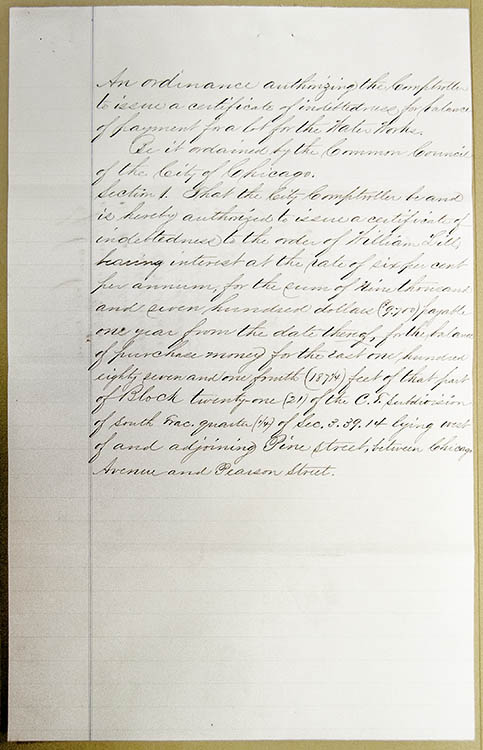 |
Lill and Diversey's brewery entered the water and tunnel conversation in 1863 in a letter to the editor that challenged the use of their private well near Chicago Avenue. The brewers responded to the Tribune editors, below: 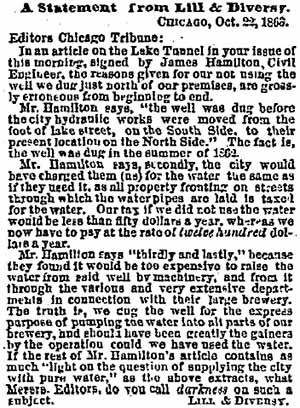 |
|